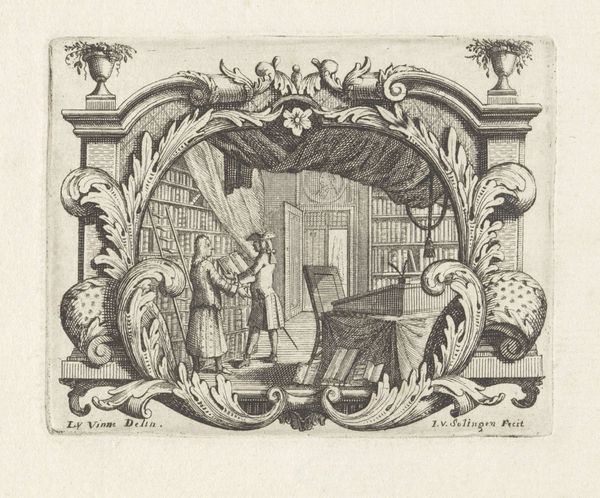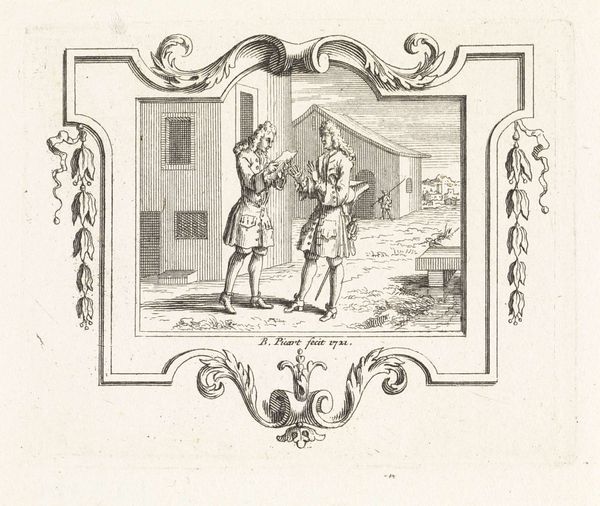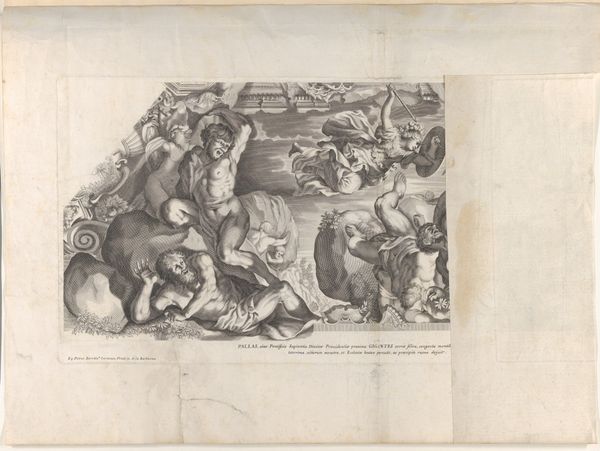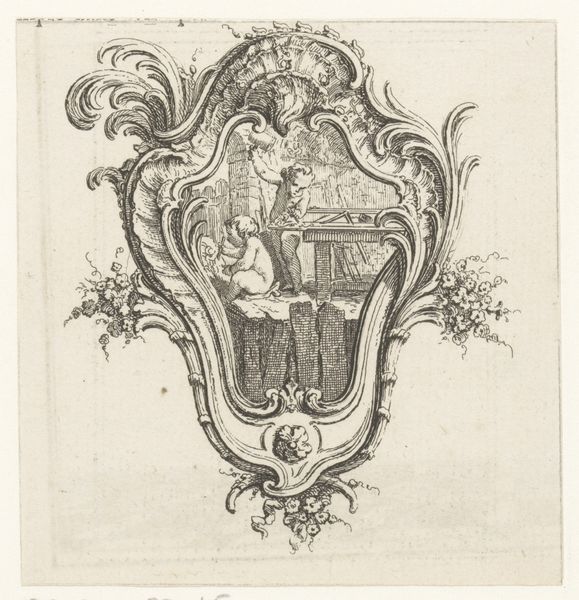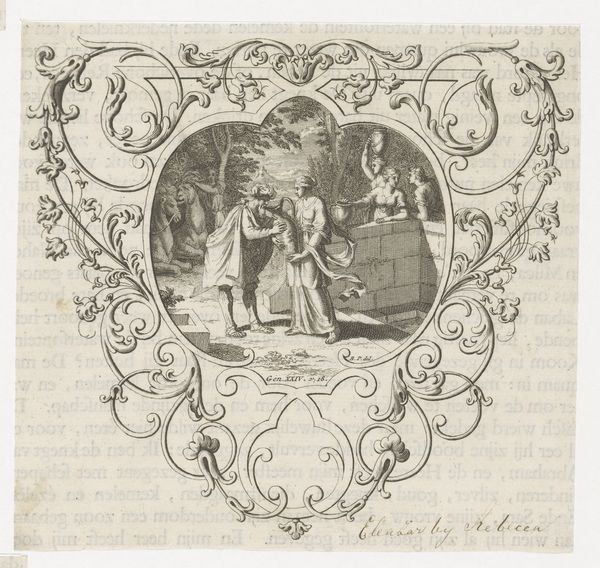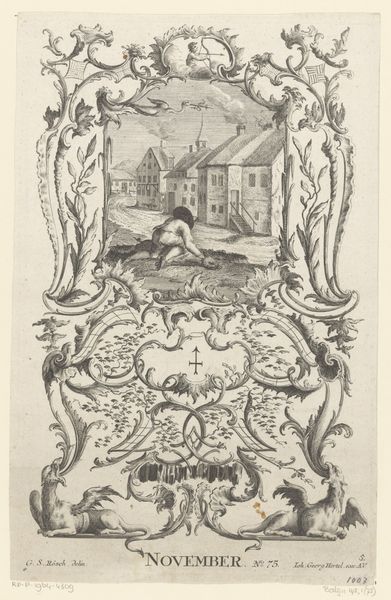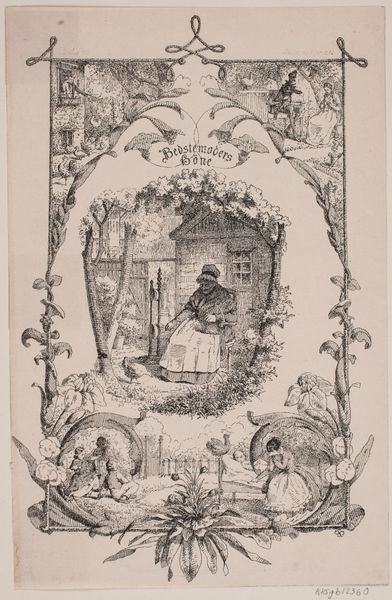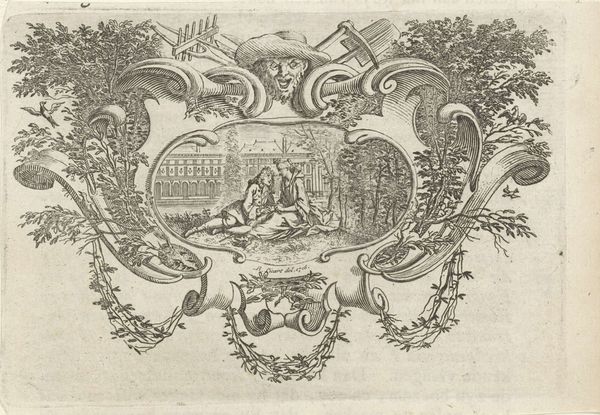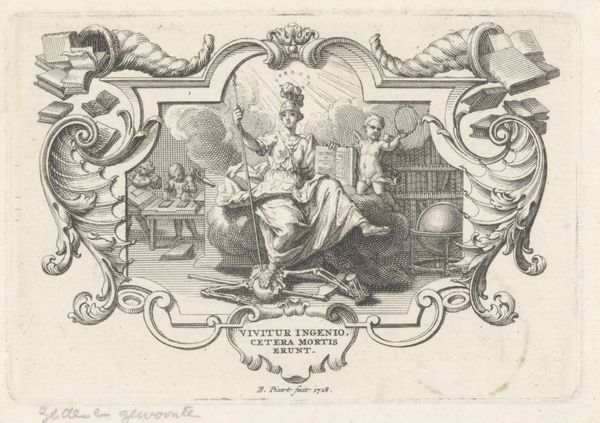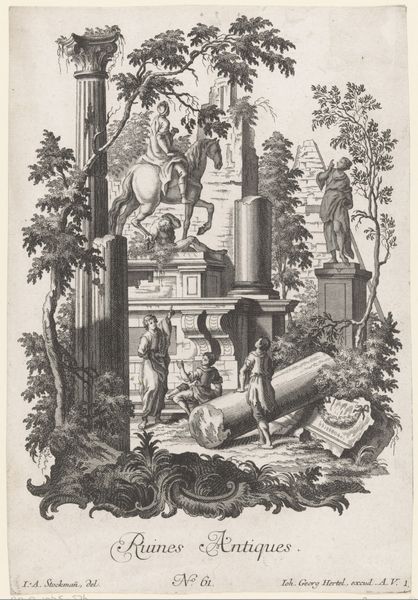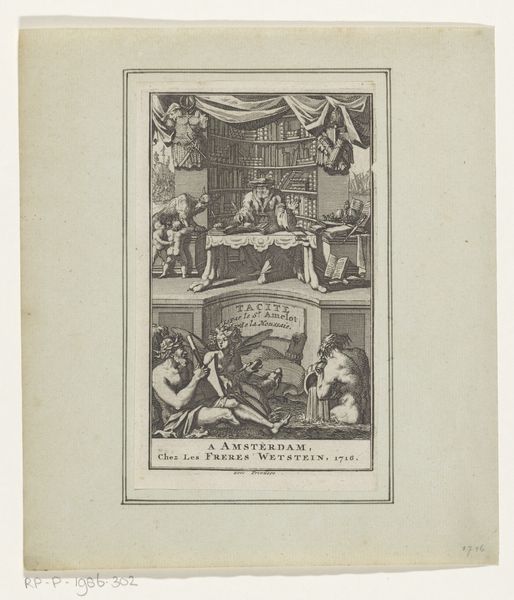
drawing, print, engraving
#
drawing
#
baroque
#
pen drawing
# print
#
cityscape
#
history-painting
#
engraving
Dimensions: 111 mm (height) x 130 mm (width) (plademaal)
Curator: This intricate engraving from 1748 is titled "Vignet til 'Thurah: Hafnia Hodierna'," crafted by Odvardt Helmoldt de Lode. It's currently held in the collection of the SMK, the National Gallery of Denmark. Editor: My first thought? It's a delightful architectural fever dream! So much going on—cherubs, scaffolding, ornate borders—it’s like a baroque visual mixtape. Curator: Indeed! Given its placement in Thurah’s work, it reflects Copenhagen's ambition as a burgeoning metropolis at the time. Thurah sought to modernize Copenhagen, so de Lode shows these constructions in the work, placing construction at the core of the Kingdom. Notice how de Lode subtly elevates city planning and craftsmanship as integral parts of Copenhagen’s identity through allegorical imagery. Editor: I’m particularly drawn to the juxtaposition of the playful cherub and the very serious, structural integrity of the column base on the other side. There's an irony there, almost winking at the grandness of architectural endeavors while simultaneously highlighting the precision that underpins it all. Curator: Absolutely, the positioning emphasizes societal dependence on both divine will and architectural integrity. It speaks to the dual role the building plays, and also hints to gender imbalance within art by drawing more emphasis to the nude boy while framing a fully clothed builder into a corner. Editor: This makes me consider that the vignette uses a sense of play and freedom as it conveys a feeling of the urban fabric, it being constantly in a state of evolution and the balance between the artistic dream, as is the floral frame, with architectural endeavors. I also enjoy imagining where the architect gets his creative spirit, being nurtured by an eternal inspiration coming down to his creations, a sort of muse of architecture. Curator: Precisely, this "playfulness," serves as a potent symbol of a society navigating complex social and philosophical transformations amidst urban growth and a desire for modernization. We see that it's far from a mere decorative element but serves as commentary for society during the mid 1700's. Editor: Thinking about it this way helps us appreciate not just the architectural details, but also de Lode’s artistic lens during this transformative time in Copenhagen. Curator: I completely concur! The ability of a piece to serve its primary, intended purpose as decoration while encapsulating societal sentiments of the era speaks volumes of art and society’s reciprocal relationship.
Comments
No comments
Be the first to comment and join the conversation on the ultimate creative platform.

